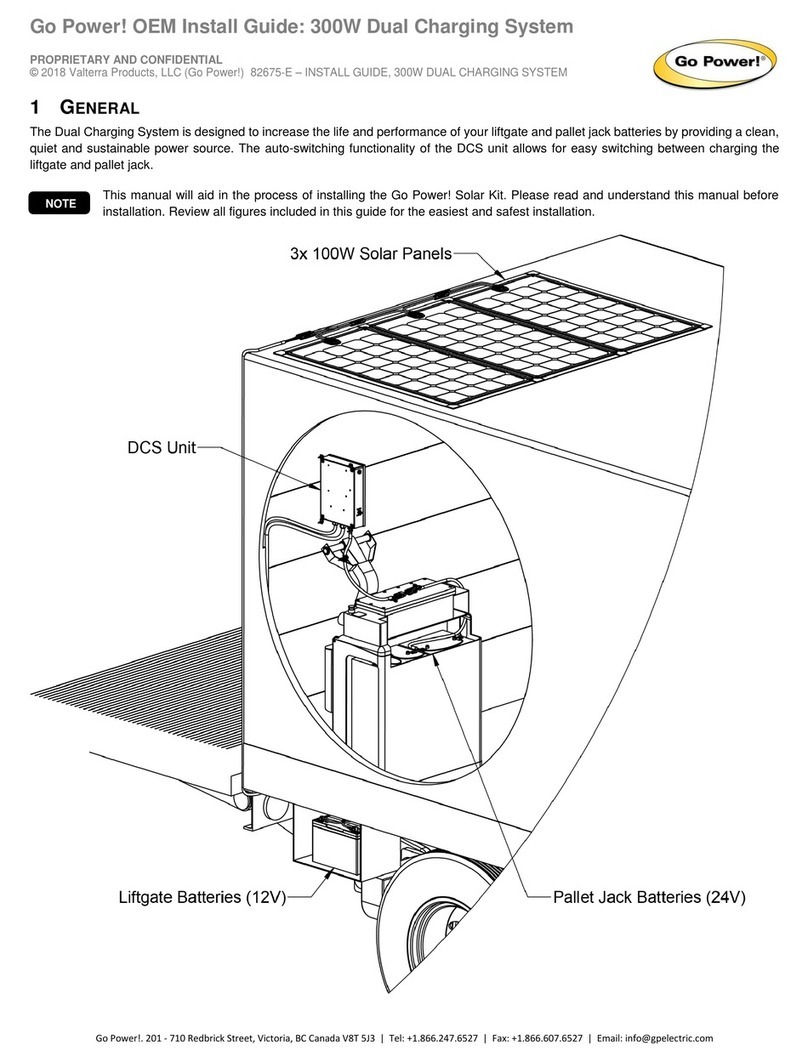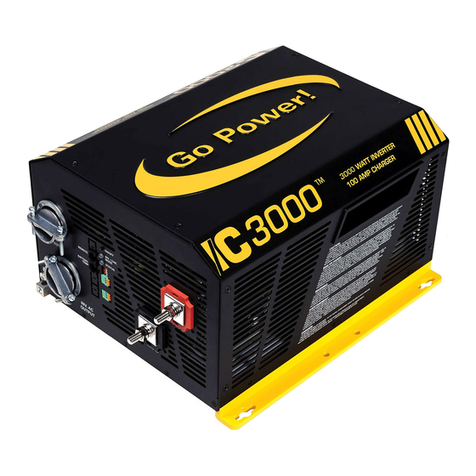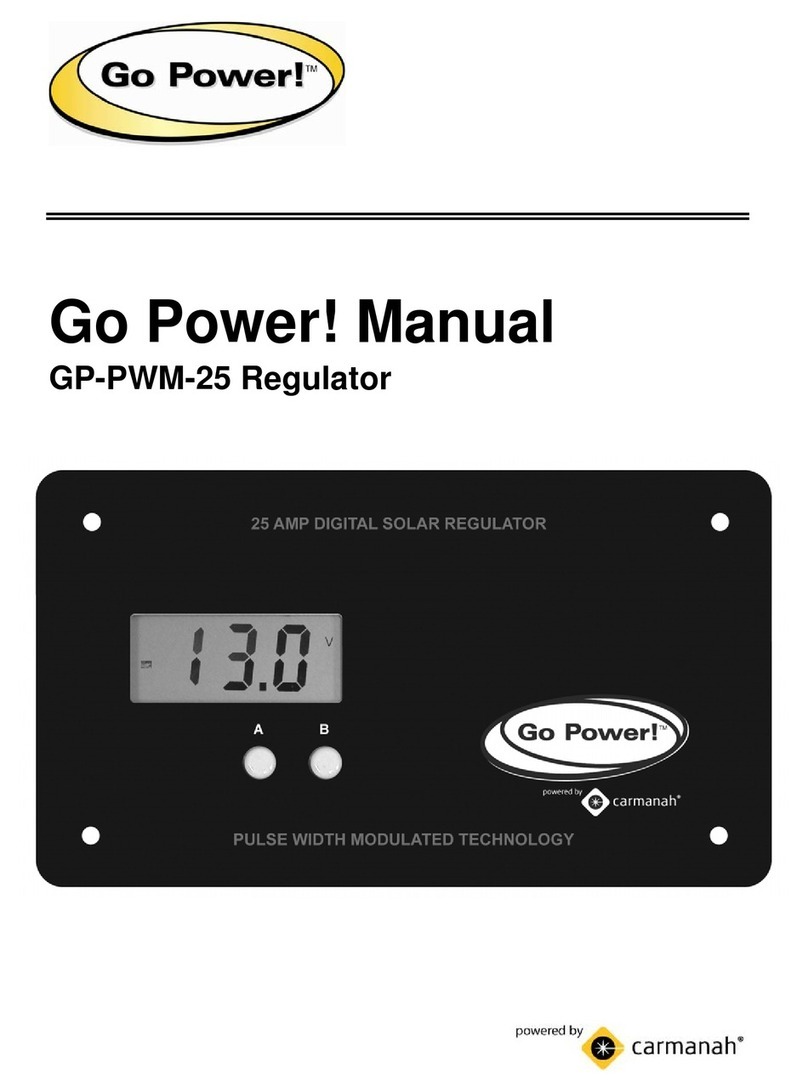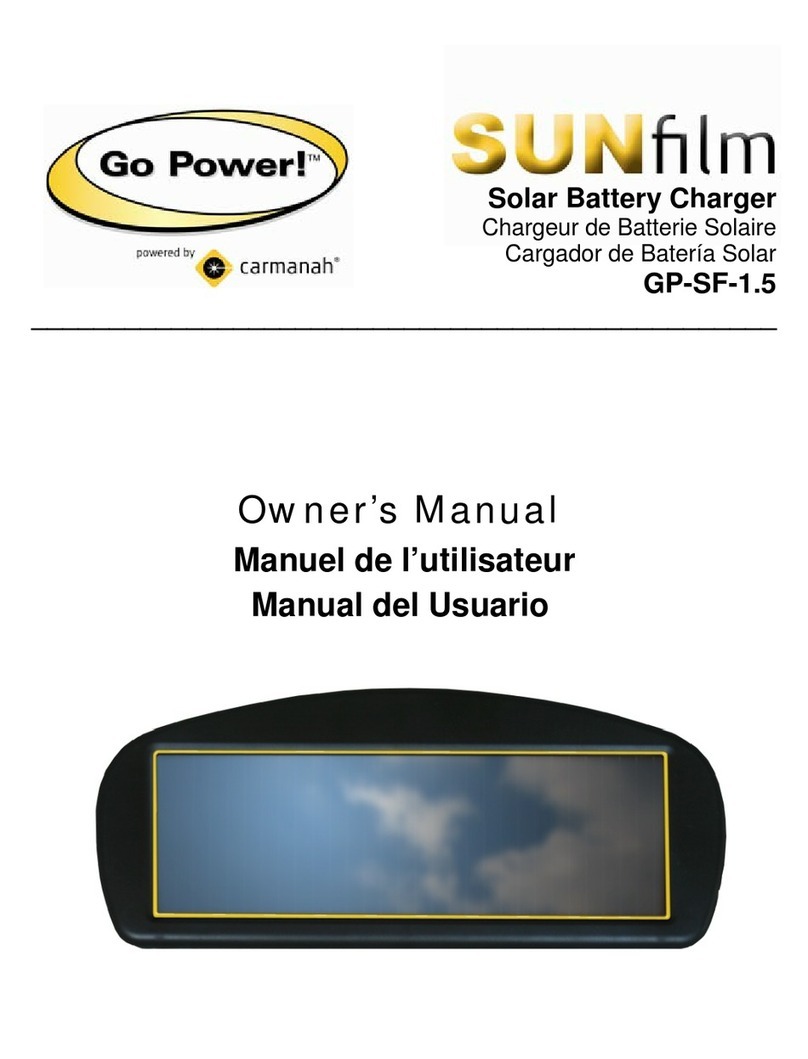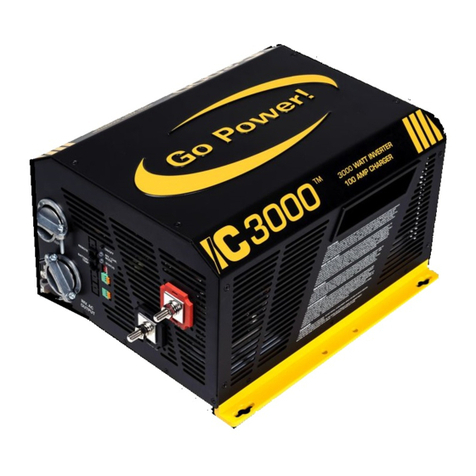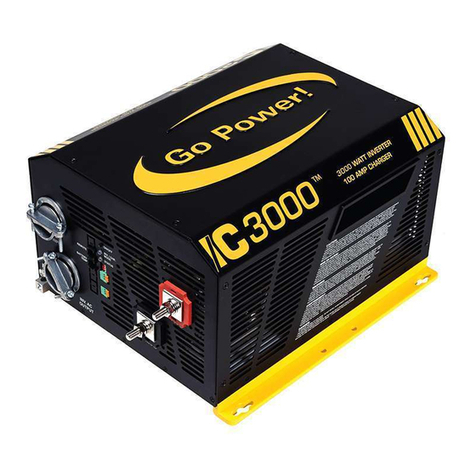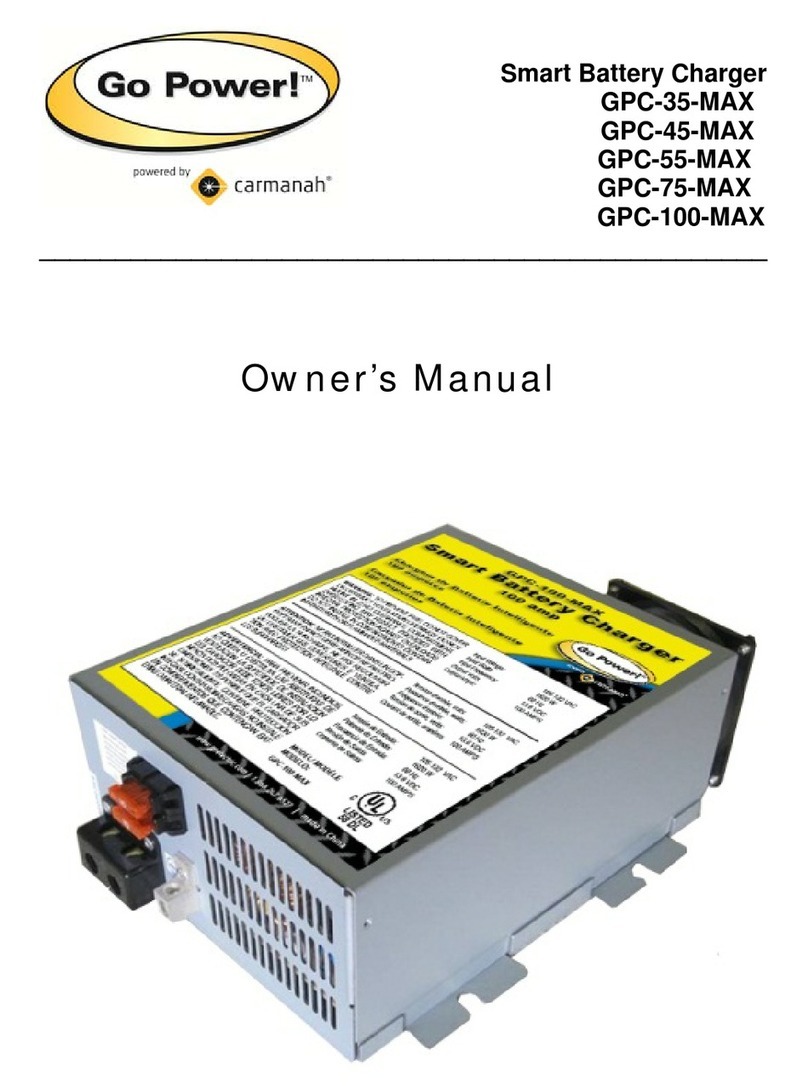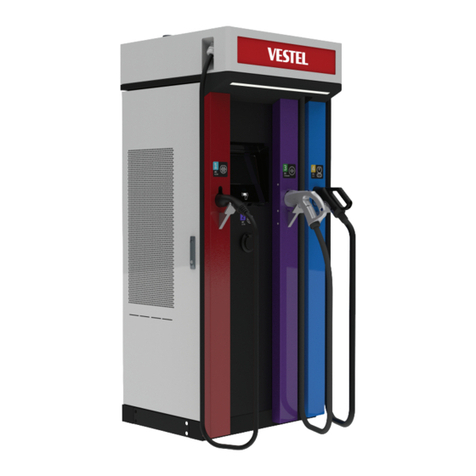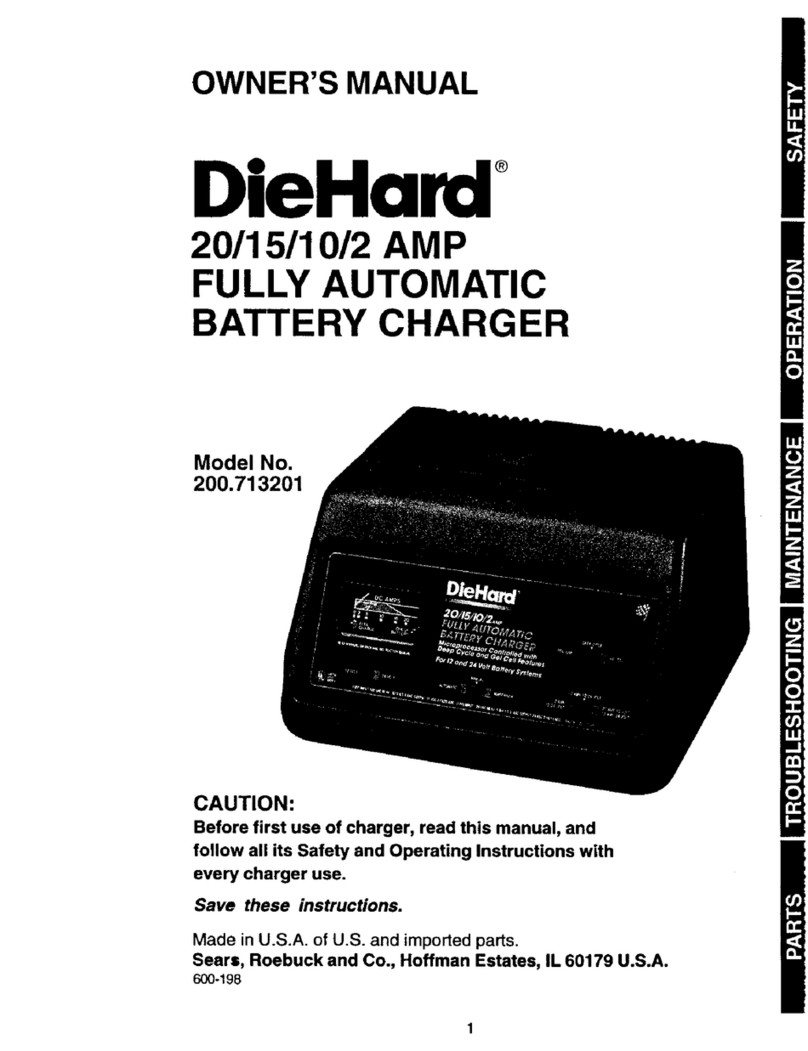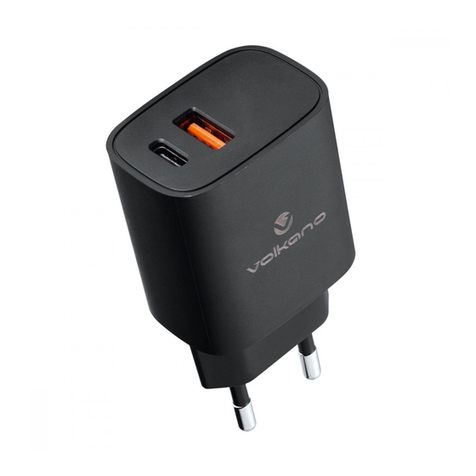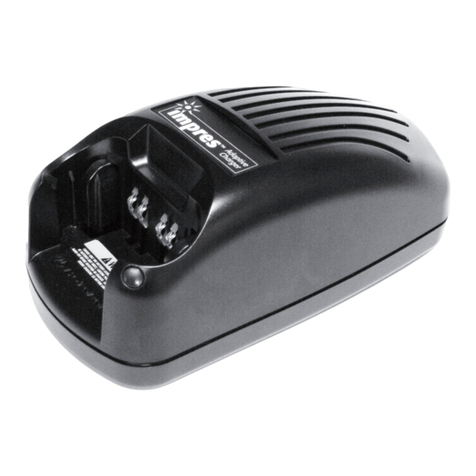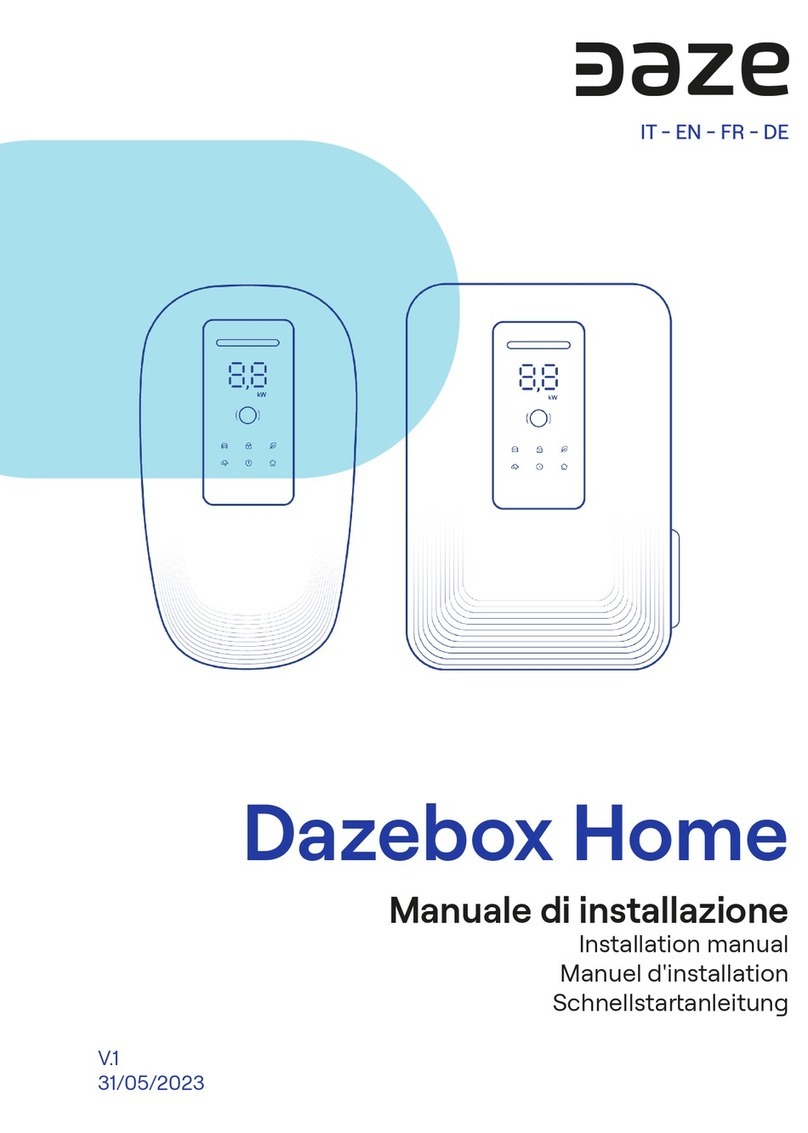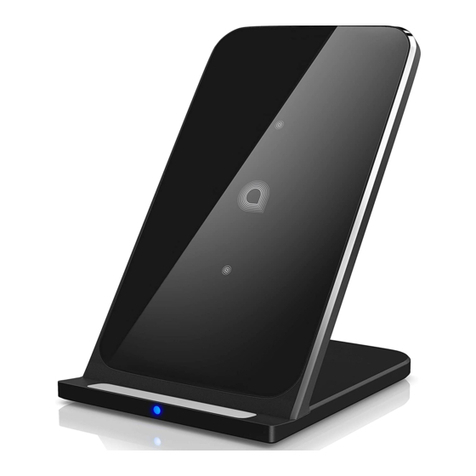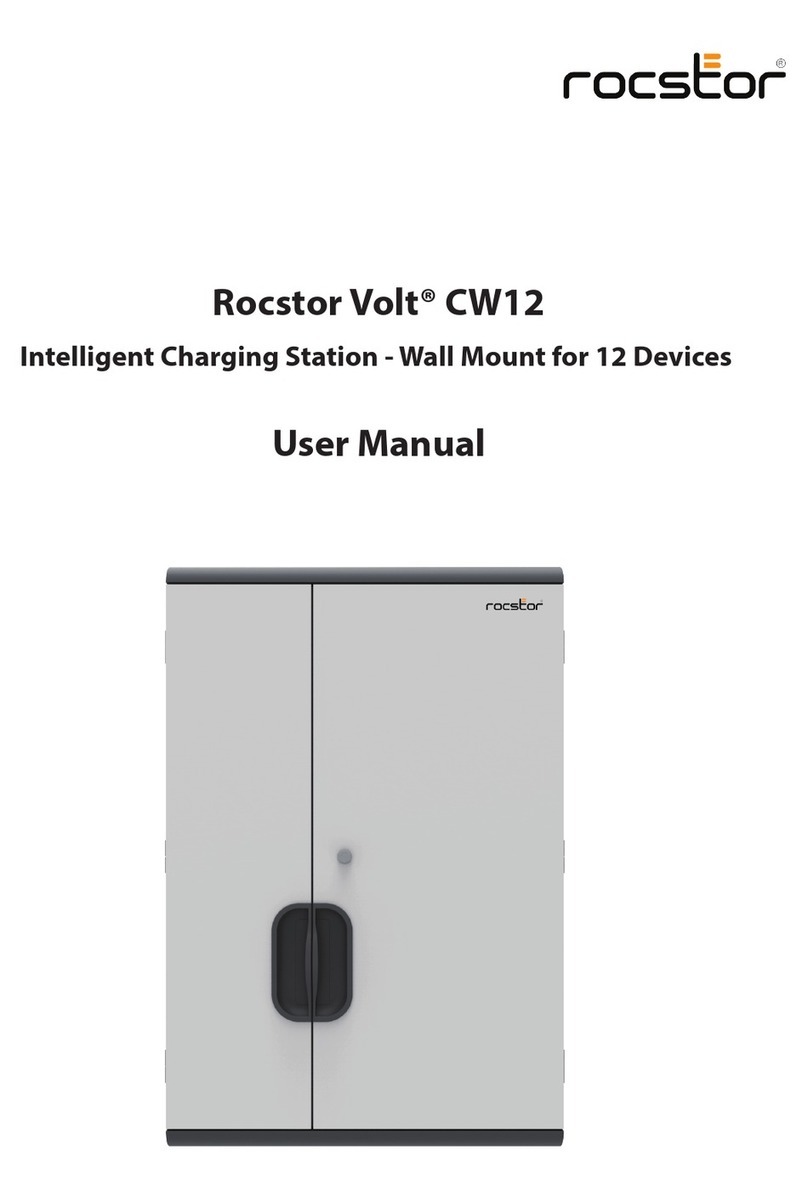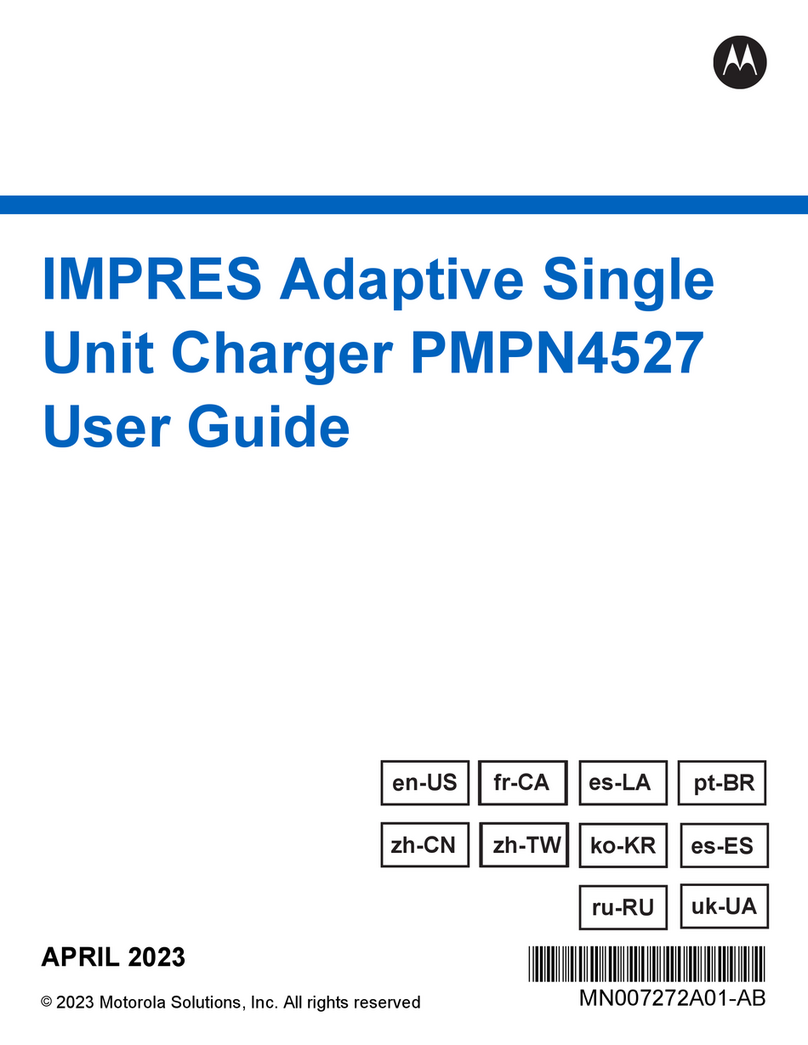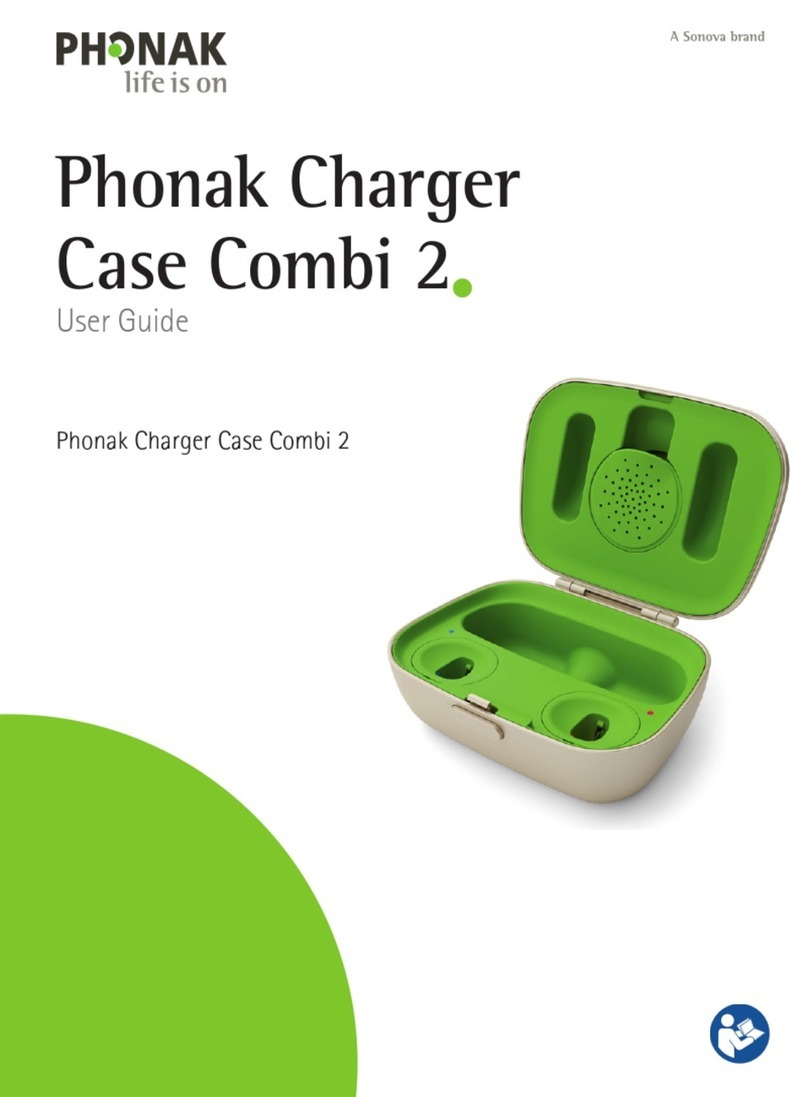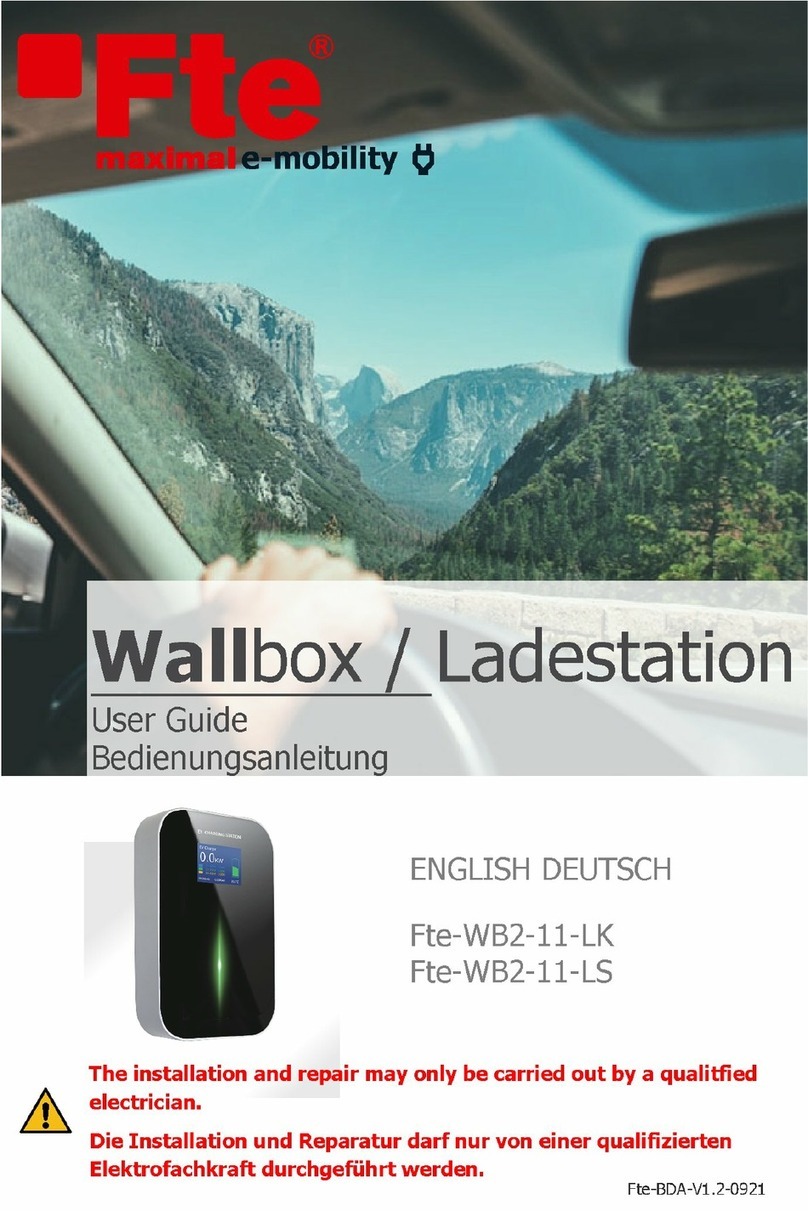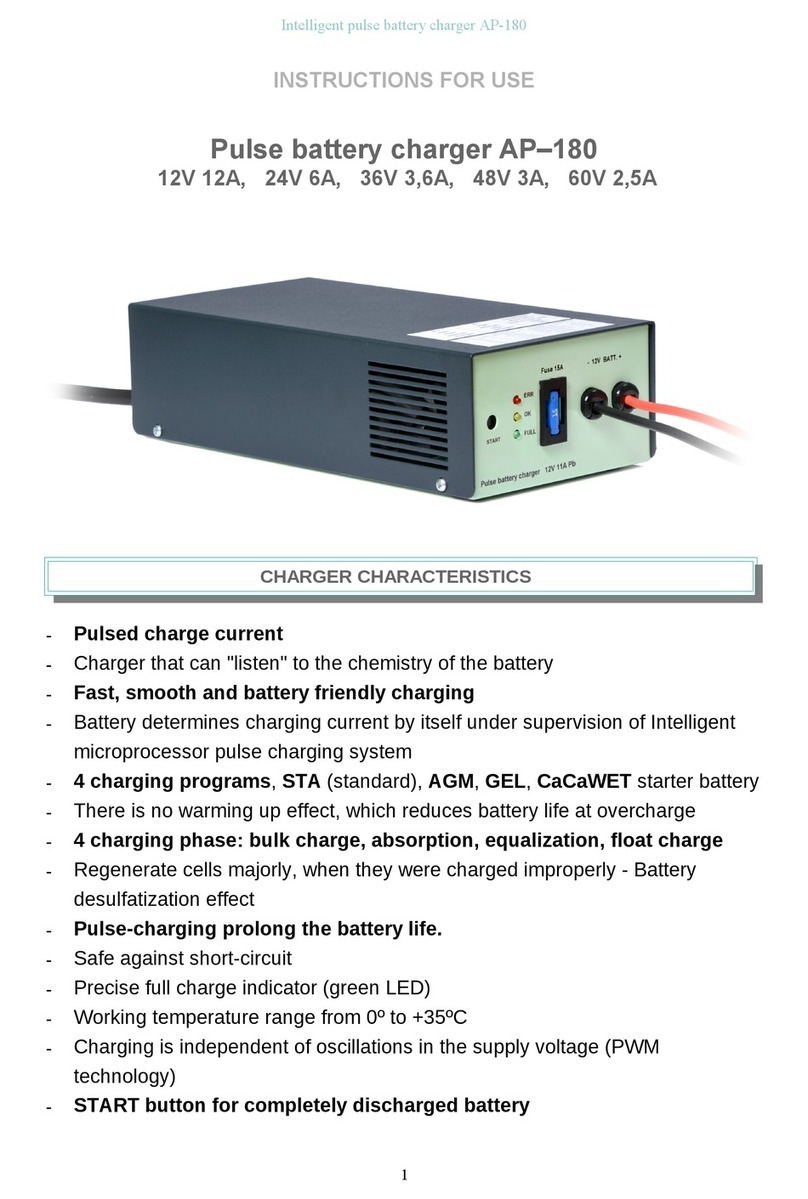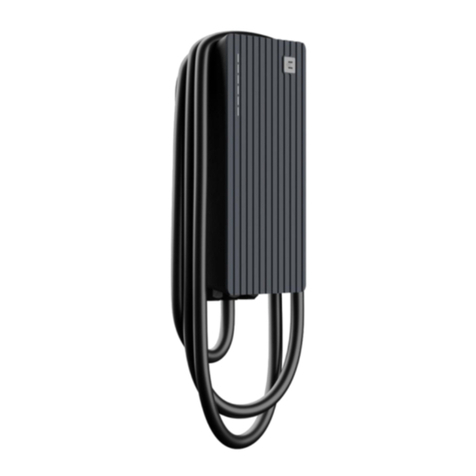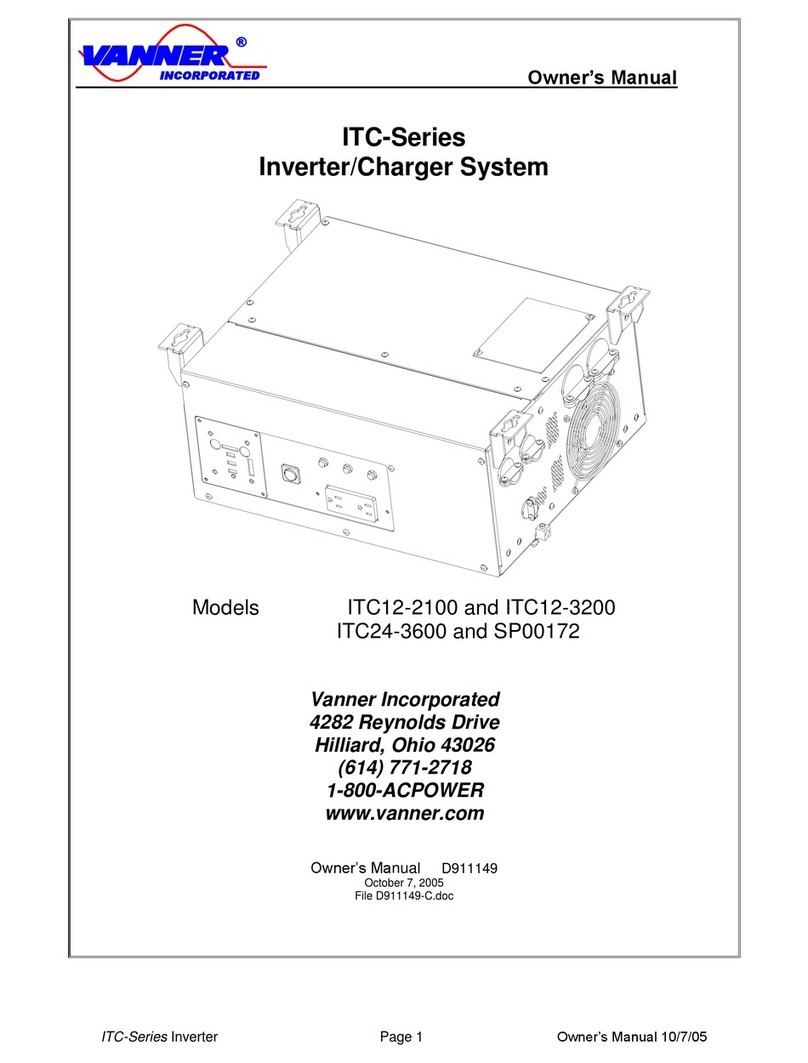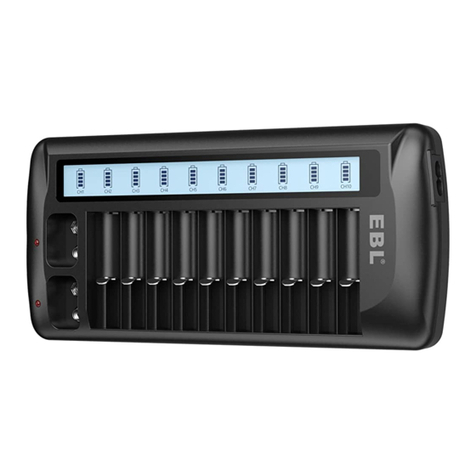Go Power 30W User manual

Go Power! Install Guide: 30/50/100/200/300W Liftgate Charging Systems
© 2021 Valterra Products, LLC (Go Power!) 80166 - Install Guide Fleet Charging Systems
Go Power!. 201 - 710 Redbrick Street, Victoria, BC Canada V8T 5J3 | Tel: +1.866.247.6527 | Email: info@gpelectric.com
1 GENERAL
The Trailer Liftgate System is designed to increase the life and performance of your liftgate batteries by providing a clean, quiet and
sustainable power source.
This manual will aid in the process of installing the Go Power! Solar Kit. Please read and understand this manual before
installation. Review all figures included in this guide for the easiest and safest installation.
NOTE

Go Power! Install Guide: 30/50/100/200/300W Liftgate Charging Systems
© 2021 Valterra Products, LLC (Go Power!) 80166 - Install Guide Fleet Charging Systems
Go Power!. 201 - 710 Redbrick Street, Victoria, BC Canada V8T 5J3 | Tel: +1.866.247.6527 | Email: info@gpelectric.com
2 DISCLAIMERS
IMPORTANT: Please follow installation and wiring instructions exactly as outlined to ensure safety. We recommend installation by a
technician or professional electrician to ensure adherence to relevant electrical codes. We have made every reasonable effort to ensure
the accuracy of the instructions in this manual, but Go Power! does not guarantee that the information is error free, nor do we make any
other representation, warranty or guarantee that the information is accurate, correct, reliable or current. For additional information please
see www.gpelectric.com.
DISCLAIMER: This kit has been engineered for use in a mobile application. Any variance by the end-user is solely of their own discretion.
Valterra Power LLC (Go Power!) assumes no responsibility for improper installation in accordance with any laws and regulations
governing: cottage, residential or commercial applications. Go Power! disclaims liability for any direct, indirect or incidental damages
caused by, or in case of, installation not performed following the instructions and cautions in this manual. Go Power! will refuse requests
for exchanges or returns, resulting from the purchase and installation of items which do not comply with local codes. To avoid such
concerns Go Power! recommends installation by a professional electrician or technician. Examples that are shown within this manual are
for illustrative purposes only.
WARNING: The solar panels must be securely fastened only to a rigid surface on your truck/trailer roof. Failure to
do so could cause the panels to lift, flex and separate from the roof while in transit which could cause significant
damage, fire and/or injury.
3 CAUTIONS
Disconnect all power
sources before attempting
installation
Electricity can be very dangerous. Installation should be performed only by a licensed
electrician or qualified personnel.
Solar panel safety
Photovoltaic panels generate DC electricity when exposed to sunlight or other light
sources. Contact with the electrically active parts of the panel, such as terminals, can
result in burns, sparks and lethal shock whether the panel is connected or disconnected.
When panels are connected in series, voltages are additive. Consequently, a system
assembled from photovoltaic panels can produce high voltages, which constitute an
increased hazard. Do not touch terminals while panel is exposed to light. Cover the
panel face completely with opaque material to halt the production of electricity when
installing or working with panels or wiring.
Battery and wiring safety
Observe all safety precautions of the battery manufacturer when handling or working
around batteries. When charging, batteries produce hydrogen gas, which is highly
explosive. Work in a well-ventilated area and use caution when making or removing
electrical connections. Ensure wires are disconnected from their power sources when
wiring. Do not expose battery to open flame, cigarettes or sparks. Shield skin and eyes
from battery acid.
Ensure all connections are tight and secure. Loose connections may generate sparks
and heat. Be sure to check connections one week after installation to ensure they are
still tight.
Work safely
Wear protective eyewear and appropriate clothing during installation. Use extreme
caution when working with electricity and when handling and working around batteries.
Use properly insulated tools only.
Observe correct polarity at
all times Reverse polarity of the battery terminals or solar terminals may damage the controller.
Do not exceed the voltage
and current ratings of the
Solar Controller
The total voltage of the solar system is the sum of the open circuit current of the solar
panels in series. The voltage of the array is the rated open circuit voltage of the solar
panels and is not to exceed the voltage rating on the controller
The system current (Imp) is not to exceed the current rating on the controller.

Go Power! Install Guide: 30/50/100/200/300W Liftgate Charging Systems
© 2021 Valterra Products, LLC (Go Power!) 80166 - Install Guide Fleet Charging Systems
Go Power!. 201 - 710 Redbrick Street, Victoria, BC Canada V8T 5J3 | Tel: +1.866.247.6527 | Email: info@gpelectric.com
FIGURE 1
FIGURE 3
FIGURE 4
FIGURE 2
4 PLANNING
1. Turn off any accessories or equipment, including connection(s)
to the truck/tractor.
2. Disconnect all negative battery connections from the liftgate
batteries.
3. Determine the location for solar panel installation. Usually the
panels are mounted on the roof above the battery location to
keep the wire run as short as possible.
4. Plan out wire routing before permanently mounting the solar
panel and any wiring. In many installations it is better to mock up
the whole installation before adhering the panels
•Leave a gap of 1” between panels to allow for
expansion and contraction and to ensure solar cells
are not covered by 4Evaseal Tape.
•Ensure that all wiring is protected from rough or
sharp edges.
•Must use isopropyl alcohol or any other de-greaser.
Must ensure the solar panel location is completely
clean. This surface must be dry and above 45⁰F/8⁰C
before adhering the panel to the trailer roof.
5 SOLAR PANELS
1. Remove the thin protective layer from the top surface of the
panel.
2. Peel back a small portion (~5”) of the nonstick layer of the
adhesive backing tape (Figure 1) on the top or bottom of the solar
module. Place the side of the panel with the exposed adhesive in
the desired panel location.
3. Now that your panel is in position, remove the remainder of the
nonstick layer. Press down on the panel. Apply even pressure to
the entire panel to ensure it is properly adhered to the trailer roof.
4. Apply 4Evaseal Tape over the perimeter of the panel. Ensure
solar cells are not covered. If using tape, ensure good adhesion
around entire perimeter of solar panel. (Figure 2)
5. If installing multiple panels, repeat steps 1–4 for each panel.
Locate multiple panels adjacent to each other. A maximum of
three 100W panels should be connected in series when using the
Go Power! 20-amp MPPT controller.
6. If installing multiple panels, use the MC4 cables that are
connected to the solar panel junction box. Connect the positive
MC4 connector to the negative connector of the adjacent panel.
This will connect the panels in series and compound the output
voltage of the panel. (Figure 3)
7. Attach the MC4 solar extension harness to the unused positive
and negative MC4 connectors on the panel(s). Note, ensure the
positive connection from the panel(s) is made with the red wire
on the harness and the negative with the black wire. If the wrong
side of the solar harness is connected, the system will still work,
but the wire colors will be reversed.
8. Secure all harnessing to roof using 4Evaseal Tape. (Figures 3-4)
9. Route the harness down the trailer to the liftgate batteries. If
available, use an existing conduit or channel. (Figure 4)
10. Cover solar panel(s) with opaque material or the boxes they
came in to halt the production of electricity while working with
solar controller wiring in Part 3.
NOTE

Go Power! Install Guide: 30/50/100/200/300W Liftgate Charging Systems
© 2021 Valterra Products, LLC (Go Power!) 80166 - Install Guide Fleet Charging Systems
Go Power!. 201 - 710 Redbrick Street, Victoria, BC Canada V8T 5J3 | Tel: +1.866.247.6527 | Email: info@gpelectric.com
FIGURE 5
FIGURE 6
6 SOLAR CHARGE CONTROLLER
1. Find a location close to the battery where the solar controller
can be mounted. Make sure this location is close enough to
the batteries to use the provided battery harness.
2. Use mechanical fasteners to secure the charge controller near
the batteries. (Figure 5)
3. Connect the battery harness to the charge controller using the
Delphi connectors. Route the solar controller’s positive and
negative connections to the positive and negative terminals on
the battery. Attach the black wire to the negative terminal on
the battery and the red/white wire to the positive terminal on
the battery. (Figure 6)
4. If installing more than one battery, connect batteries together
as shown to charge and discharge batteries evenly. (Figure 7)
5. Reconnect negative battery connections disconnected in Part
1.
6. Attach the MC4 solar extension harness to the solar controller
using the MC4 connectors. (Figure 5)
7. To ensure the solar panels are charging the batteries, you will
require a clamp-on ammeter. Make sure the solar panel(s) are
in the sunlight. Clip the clamp-on ammeter around the positive
solar connection between the solar controller and the liftgate
batteries. Activate the liftgate for one cycle. You will see
current on the ammeter as the power flows from the solar
controller to the battery. The charge controller can take up to
one minute to start charging, so there may be a delay before
current flow is registered on the ammeter.
LED Indications & Warning Functions
LED
Status
Function
On
Controller connected to battery, night detected
Flash
Controller connected to battery, day detected
Off
No battery connected
On
Charging failure (overvoltage / overcurrent)
Off
Charging OK
On
Battery voltage very low or high voltage disconnect
(HVD)
Off
Battery voltage in normal range
All LED
Green->Red->Green->
Programming
7 SOLAR PANEL MAINTENANCE
Although Go Power Solar Kits are generally maintenance free,
performance gains can be made with clean solar panels.
1. Clean the solar panels monthly. Use water and a soft sponge
or cloth. A mild non-abrasive cleanser can be used for more
stubborn residue. Rinse well.
2. Clean solar panels more frequently during drier months, as
they may become covered in dust more quickly. A pressure
washer is not recommended.
3. Visual inspection – check the exterior for cracks, missing or
broken hardware or other potential problems. Check all roof
penetrations and replace sealant areas as required
FIGURE 7
This manual suits for next models
4
Table of contents
Other Go Power Batteries Charger manuals
